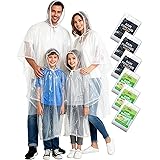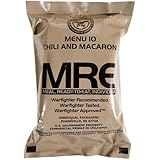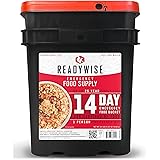1. Assess Your Needs
Understanding the Purpose
Before diving into packing your portable survival pantry, the first thing I like to do is assess what exactly I will require. Are you heading into the wilderness for a few days of camping, or are you preparing for a natural disaster? Each situation has different needs. I’ve found that in prepping, clarity is key. If I’m clear on what I might face, I’m less likely to pack unnecessary items.
Consider factors like the number of people you’re catering for and the duration of your trip or the emergency. This helps determine how much food will be needed. A few granola bars might be enough for a day’s hike, but if you plan on having a family camping trip for three days, you’ll need more substantial meals.
Finally, account for any dietary restrictions. I’ve had to adjust my pantry to accommodate gluten-free options for friends, and it’s a good reminder that everyone’s needs vary. Creating a tailored plan is not just practical; it ensures everyone stays fed and happy.
Evaluating Available Space
Next up is figuring out the space you have available. I’ve messed up in the past by overpacking or not being mindful of what my backpack or storage container could hold. Sometimes, I get a little too ambitious! Taking inventory of your available space can save a lot of hassle later. Measure the dimensions of your backpack, cooler, or whatever you’re using to store your food and supplies.
After assessing the space, I like to sketch out a rough idea of how I want to pack it. It helps to think about items you’ll need to access quickly versus those that can be buried at the bottom. The last thing I want is to be digging through layers of food just to get to the first aid kit! It’s all about strategic packing.
Remember, balance is also important. If you’re carrying heavy cans of food, make sure you distribute the weight evenly for comfort. Over the years, I’ve learned that a little extra attention to packing can make all the difference when you’re out and about.
Identifying Long-Lasting Foods
When it comes to filling my portable survival pantry, I want to make sure I select foods that won’t spoil easily. My go-to choices include items like dried fruits, nuts, and vacuum-sealed meals. These foods not only have a great shelf-life, but they’re also energy-dense, which is super important if you’re in a survival situation.
Don’t forget to include some canned goods. I personally love canned beans and tuna—they’re versatile and can be eaten on their own or added to a meal. When I’m packing, I prioritize items that don’t require refrigeration and are easy to prepare. Anything that can be eaten right out of the container is a win in my book!
== > What if ... Get a FREE Subscription to PREPARE
Lastly, remember to throw in some snacks. It’s nice to have quick options available that can provide a little boost when you’re feeling low on energy. Trail mix or even energy bars have always done the trick for me during long hikes. Keeping morale high with tasty treats can make a big difference in how everyone feels during an adventure.
2. Gather Your Supplies
Choosing the Right Containers
Container choice is a crucial part of setting up your pantry. I’ve made some rookie mistakes by picking containers that weren’t suited for my needs, and let me tell you, it can be a pain. You need something durable and preferably waterproof. I usually opt for some sturdy plastic bins or my trusty dry bags for water resistance.
Also, think about the size and practicality of your containers. Smaller boxes are easier to fit into tight spaces, but I also want to ensure I can fit enough food in there. The last thing I want is to scramble to fit everything in, especially when I’m on the move.
You might even consider color-coding or labeling your containers. I’ve started doing this with my own supplies, and it makes things so much simpler when I’m in a rush. It’s all about being organized, so I can grab what I need without fumbling around.
Essential Cooking Gear
Having the right cooking gear can make or break your survival pantry experience. I’ve always thought it’s wise to pack lightweight cooking tools. A portable stove is a game changer for me—it allows for meal prep on the go without worrying about campfires or safety issues.
Cutlery is another must-have in my pantry. Having a good knife, cutting board, and utensils is essential for both meal prep and eating. Don’t skimp on quality here; trust me, it makes the whole experience more enjoyable. In my early days of camping, I used flimsy tools that broke or bent under pressure, and it was frustrating!
Also, consider packing some multi-purpose tools. I’ve got a trusty Swiss Army knife that has saved me in many situations—it’s small but mighty. It saves space and also cuts down on the number of items I need to carry. Packing smart really pays off in the long run!
Gathering Non-Food Essentials
Of course, food isn’t the only component of a successful portable survival pantry. I always make sure to include non-food essentials. Think about basic cooking supplies like a can opener, matches, and perhaps some utensils. You don’t want to find yourself struggling with a meal because you’re missing one vital tool!
Don’t forget a good first aid kit! This is something I cannot stress enough. I’ve learned this the hard way. When you’re out in the wilderness or in an emergency, accidents can happen. Being prepared with band-aids, antiseptic wipes, and other necessary items gives me peace of mind.
Lastly, pack any personal items you might need, like hygiene products or medications. It’s easy to overlook these things while focusing on food, but they’re just as important. I always double-check that I have the essentials because I’ve learned from experience that hygiene can be tricky if you’re on the move.
3. Pack Efficiently
Maximizing Space
When it comes to packing your portable survival pantry, I feel like I’ve tried every method out there. The top tip I often share is to take advantage of every nook and cranny available. Don’t just stack items haphazardly. Instead, arrange them in a way that maximizes your space without squashing smaller items.
Bigger items should be placed on the bottom for stability, while lighter, smaller things go on top. I’ve started using reusable bags to compartmentalize snacks and smaller items. It makes it easier to find what I need without taking everything out.
Additionally, don’t forget about the weight distribution. Packing heavy items closer to my back helps balance the load, especially if I’m on foot. If I pack heavier items towards my feet, it can throw me off-balance, leading to fatigue on longer hikes.
Creating Accessibility
Accessibility is one of my main priorities when packing my pantry. I know from experience that if I bury essentials at the bottom, I’ll never be able to find them quickly—especially in a stressful situation! I tend to place frequently used items on top or in a separate, easy-access compartment.
Another strategy I’ve found helpful is keeping a small pouch of emergency items handy and visible. Things like my first aid kit, snacks, and water purification tablets are right where I can grab them fast if needed. This little effort has saved me a lot of time, and it’s crucial for maintaining calm during emergencies.
Also, if I’m on a longer trip, I often rotate the items I’m using. If I consume certain items more quickly, I’ll pack them in a way that makes them fast to access again. It’s all about creating a system that works for you.
Sealing and Protecting Your Supplies
Once everything is packed, the next step is to make sure your supplies are protected. I like to use resealable bags and sturdy containers to shield items from moisture and pests. It’s always a good idea to be cautious, especially when dealing with perishable food or items that could spoil.
Get Preparedness and Self-Reliance Tips. Subscribe Now!
For added protection, I also recommend taking some silica gel packets and tossing them in your containers. I’ve learned that they work wonders in absorbing excess moisture, helping to prolong the life of my supplies. A little bit of prevention goes a long way!
Lastly, make sure to label everything clearly. I use some sticky labels to jot down the contents and expiration dates. Knowing exactly what I’ve got and when it needs using helps me stay organized, and it keeps things running smoothly when I’m on the go.
4. Maintenance and Rotation
Regular Inventory Check
Just because I’ve packed my portable survival pantry doesn’t mean I can forget about it. I make it a point to conduct regular inventory checks. Every few months, I’ll take a look and ensure nothing is expired or needs replacing. It’s so easy to forget what you’ve packed, and I’ve learned the hard way that stale snacks or expired meals don’t do anybody any good.
During my check, I also assess what worked well and what didn’t on my last trips. This reflection helps me fine-tune my selections. If something was a hit, I’ll make sure to include it next time. However, I’ll also remove items that didn’t get touched—no sense in taking up valuable space!
I mark my calendar for these checks so that I won’t let time slip by. Just a little reminder makes all the difference, ensuring my pantry is always ready for my next adventure.
Refreshing Supplies
As part of my maintenance plan, I also focus on refreshing supplies regularly. This means replacing items that are nearing their expiration date. For example, my kids have a habit of polishing off snacks quicker than I anticipate, so I find myself restocking quite a bit!
This refreshing process is made easier by rotating my inventory. When I add new items, I make sure to place them behind older ones. It’s become second nature for me now, but it really helps keep everything fresh and ready to eat.
Additionally, I’ve learned that some foods do well in different seasons. For instance, summer trips might require more lighter fare, while winter needs heartier options. Adjusting my pantry accordingly keeps meals interesting and suitable for the vibe!
Staying Informed on New Options
As I continue to refine my portable survival pantry, I also like to stay informed about new food options that might be available. With so many innovations in food technology, it’s exciting to explore new items that may enhance my pantry. I’ve recently found some amazing pre-packaged meals that are not only delicious but also lightweight and easy to prepare.
To stay in the loop, I often browse through blogs, camping supply stores, or even local farmers’ markets for fresh ideas and supplies. Interacting with fellow outdoor enthusiasts can often provide tips and tricks that I hadn’t even considered yet. It’s always great to learn something new!
As I get more knowledgeable, I can continuously improve my pantry. Embracing change leads to better meals and experiences on any outing!
5. Plan for Different Situations
Emergency Preparedness
When packing my portable survival pantry, I take some time to brainstorm different emergency situations that could arise. It’s kind of like planning for the worst and hoping for the best, right? I consider things like severe weather events, power outages, or when I have to leave home due to unexpected events. It’s always good to have a plan in place.
This means adjusting my inventory to include items that cater specifically to these situations. For instance, if I’m prepping for a winter storm, I’ll be sure to have additional warm drinks, and hearty comfort foods packed away. It’s a little thing, but it helps me feel more prepared!
Having an emergency plan also extends to knowing how each item in my portable pantry can be utilized. The more I think ahead, the better equipped I am to handle any situation. It’s about empowering myself to make the right choices when it counts the most.
Adventure Planning
Alongside emergency preparedness, I like to gear my pantry towards the types of adventures I plan to undertake. For example, if I’m going on a bear country trip, I know to pack food in bear-resistant containers. I also choose lightweight, compact foods if I know I’ll be trekking long distances.
Keeping the flavor profile in mind is also important. On more fun trips, I’ll include a few treats just for the enjoyment factor. It’s not all about survival; after all, sometimes it’s about the experience! Having delicious meals can add to the memories we create while camping or hiking.
When I research my destinations, I take that info back to my pantry plans. If I’m heading somewhere that focuses on fresh ingredients, I might leave some space available for foods I can pick up along the route. It keeps my meals flexible and exciting!
Adjusting to Feedback
Lastly, I always remind myself to adjust my plans according to the feedback I receive from my companions. If I’m camping with friends, I’ll poll them on what they liked or didn’t like about the food I packed. It’s their adventure, too, and I want them to enjoy it as much as I do.
Listening to others helps me brainstorm ideas for next time and creates a more enjoyable experience. Sometimes, I find that people have entirely different preferences than I realized, and it shows me that food choices are essential for shared journeys.
With these adjustments, I can refine my portable survival pantry over time continuously, which brings a level of comfort and fun into all my future outings.
Frequently Asked Questions (FAQ)
What foods should be prioritized for a portable survival pantry?
When selecting items, I recommend prioritizing non-perishable, energy-dense foods such as dried fruits, nuts, canned goods (like beans and tuna), and vacuum-sealed meals. These tend to have longer shelf lives and are easy to pack and carry.
How can I ensure my portable pantry remains organized?
I find that labeling containers and using compartmentalized bags is a great way to stay organized. Additionally, regularly checking your supplies to refresh and remove expired items will help keep things neat.
What cooking gear is essential for a portable survival pantry?
Essential cooking gear includes a portable stove, a sturdy knife, cutting board, and utensils. Multi-purpose tools can also save space and offer versatility in meal preparation.
How often should I check and refresh my portable pantry supplies?
I recommend doing an inventory check every few months to refresh and replace any expired items. This also allows you to assess your past trips and make adjustments for the next one.
Can I customize my portable survival pantry for different activities?
Absolutely! It’s highly recommended to adjust your pantry based on specific activities or emergency situations. Consider the duration and type of adventure you’ll undertake and pack accordingly for an optimal experience.






